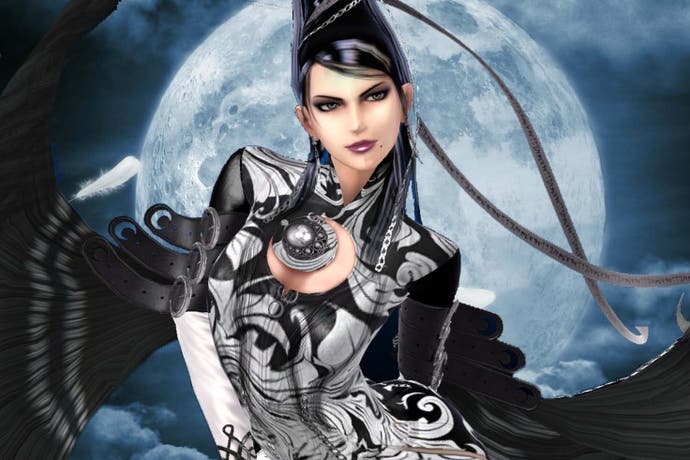Is Bayonetta on Switch the definitive console version?
Faster than Wii U and Xbox 360 - but what about Xbox One X back-compat?
We've already looked at Bayonetta 2 on Nintendo Switch and came to the conclusion that while the mild visual upgrades over the Wii U original were welcome, it was performance that impressed us most, with a much closer lock to 60 frames per second gameplay. With that in mind, it'll come as little surprise to see much the same situation with the first game, but the difference this time is that the original Bayonetta is also available on PC and Xbox 360 (we'd best not mention the PS3 version) so how well does the Switch version compare to all of its rivals?
To begin with, just as we saw with Bayonetta 2's Switch port, the original also operates at 1280x720, bringing it into line with the existing console versions. On the surface, this is disappointing bearing in mind the extra power of Nintendo's latest hardware, but as we'll discover later, there are benefits. And that's not to say some improvements haven't been made to general image quality. For example, Switch's texturing is slightly improved over Wii U. It's a difference so subtle, it may well come down to a difference in hardware implementation, but other changes do seem to be more than that - for example, improved edge aliasing when models are presented against field of view, along with adjustments to the depth of field effect itself, environment shading and bloom lighting.
Up against the PC version, the comparisons are intriguing - Platinum delivered improved shadow quality and higher resolution options, but texture quality is around the same suggesting that all existing editions of the game are indeed based on the Xbox 360 original. Differences with the Microsoft platform are again minimal: shadow implementation varies and the Switch version isn't quite as vibrant, but overall, there's little to separate the two.
More important to Switch owners is the comparison between docked and handheld mode. Native 720p resolution is retained when gaming on go, a full 1:1 pixel match for the mobile display, meaning it looks nice and sharp. To deliver smooth performance though, compromises are necessary. Texture filtering quality, for instance, takes a significant hit, taking it below the quality levels set by the docked mode, Wii U and Xbox 360. Shadow resolution is also modified slightly between the two. Of course, on the small screen, these changes aren't a real problem and the game winds up looking beautiful as a portable title. UPDATE: A quick word on mobile performance - similar to Bayonetta 2, it's not as smooth as docked play, but still faster overall than the Wii U game. On the move, it's great.
So, mobile play aside, what is the Switch advantage? Well, perhaps unsurprisingly bearing in mind our Bayonetta 2 results, it's all about performance. There are drops here and there in docked mode, but overall, Bayonetta on Switch comes very close to hitting its target 60fps, especially impressive in areas where Wii U simply doesn't get close. There's a better, more consistent experience to enjoy here. It's faster than Xbox 360 too, with no tearing. Indeed, in our tests, Bayonetta on Switch is a close match for the original game running under backwards compatibility mode on Xbox One X.
Compared to Wii U, Switch seems to have a better lock on scenes that are heavy on memory bandwidth. Depth of field drops frames on Nintendo's old console, while Switch never misses a beat. The same is true in scenes with lots of particles and alpha effects. On Wii U, screen-filling effects work of this style absolutely tanks frame-rate, and while Switch can still drop frames, the impact is less severe and the system recovers more quickly. It's just smoother in heavy scenes, making for smoother gameplay just when you need it. And indeed, it's only in these most taxing of scenes that Xbox One X commands a performance advantage.
That's not the end of the performance improvements though, as Switch also trounces the Wii U when it comes to loading times. There are numerous loading screens throughout the game and while they're entertaining enough, it's nice to get into the action faster. A case in point is a 15 second load on the disc Wii U version taking just five seconds on Switch, with the game hosted on an SD card. Based on previous testing, you can expect that to be marginally faster if you have game hosted on internal memory.
Overall, Bayonetta on Switch is solid version of a brilliant game let down only by its low docked resolution. The trade-off is clear, though: what you lose in terms of pixel-count, you gain in the form of a very smooth experience. Performance is much faster than all previous console releases, with only the brute force power of the PC version or the back-compat Xbox One X experience offering any advantage over the Switch experience.
And of course, what those alternatives can't deliver is the ability to play a genuine console classic in a truly portable, miniature form-factor - and that's part of what makes this Bayonetta/Bayonetta 2 double-pack so compelling. While there's nothing genuinely new delivered by these ports, the magic of the Switch itself adds a new, compelling layer to this superb Platinum experience.



